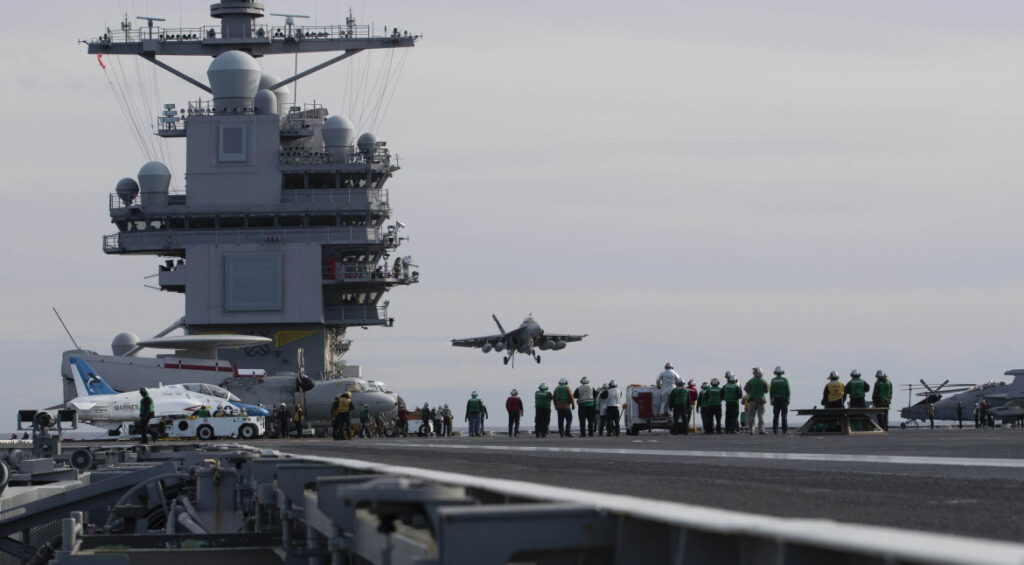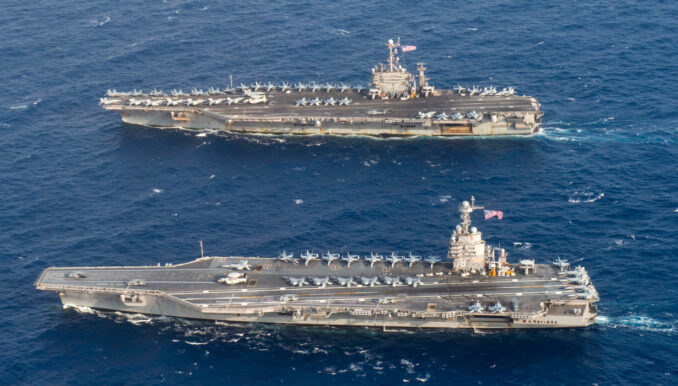According to the website of Volkswagen Machinery magazine on January 12, three years after joining the United States Navy, the “old problem” of the aircraft carrier Ford has not been solved, which limits the ability of the new aircraft carrier to dispatch carrier-based aircraft.
According to the report, Ford, the first U.S. naval aircraft carrier equipped with electromagnetic ejection and new blocking devices, Ford suffered unexpected failures in both aspects, which made it impossible for the aircraft to eject or recycle carrier-based aircraft for many consecutive days.
At the same time, only half of the new weapons transport elevators on the aircraft carrier can function properly, which limits the ability to assemble ammunition for carrier-based aircraft.
The “Ford” aircraft carrier is the first ship of a new “Ford”-class aircraft carrier in the United States. It will be used to replace the aging “Nimetz”-class aircraft carrier and can carry more than 70 carrier-based aircraft.
The aircraft carrier uses a number of high-tech technologies to improve combat efficiency, but unfortunately, many of the new functions of the aircraft carrier Ford have faced reliability problems since it entered service in 2017.
The aircraft carrier adopts a new electromagnetic ejection device to replace the old steam ejector. Electromagnetic ejection can not only allow the aircraft carrier to eject more carrier-based aircraft at the same time, but also safely eject new fighters, including light drones.
However, according to a report by Robert Baylor, director of the Pentagon for system testing, the electromagnetic ejector should not fail once on average 4,166 ejected, but in actual tests, the ejection interval between each failure averaged only 181 times, and the two failures in 2020 “causing bullets” The shooter was disabled for three days.
However, the new blocking device equipped with the aircraft carrier also has problems.
The theoretical failure frequency of this device should be 1/16500, but according to Baylor’s report, the blocking device will fail after an average of 48 ships are on board.
In addition, there are still problems with the advanced weapon elevators equipped with the aircraft carrier Ford, which are believed to be able to transport ammunition from ammunition depots to weapons managers faster, and the carrying capacity is stronger than the old elevators.
When the Ford entered service in 2017, only two of the 11 weapons elevators could be used.
According to the latest report of the Pentagon, six elevators are now available, and the Navy plans to put all 11 elevators into use only in April this year.

According to the report, all these problems interact with each other for the new aircraft carrier. The number of aircraft carriers ejected take off is the same as the number of fighters blocking the ship.
If the blocking device is fine and the ejection device is wrong, it will not help to improve the overall combat readiness of the aircraft carrier.
In the conflict, if 11 weapon elevators are not fully activated, the loading capacity of carrier-based fighters will be limited. Unless all three problems are solved, the combat capability of the aircraft carrier will be greatly limited.
In a previous report, the U.S. Naval Research Association has said that compared with the old Nimitz-class aircraft carrier, the new system of the USS Ford aims to increase the combat take-offs of carrier-based aircraft by 25% to 30%.
Although the U.S. Navy will eventually solve the problem of catapults, blocking devices and weapon elevators, it is now safe to say that Ford, which has served for three years, is significantly less efficient than the previous aircraft carrier.
The report believes that the success or failure of Ford may affect the future of the U.S. Navy’s aircraft fleet. The U.S. Navy needs at least 10 new aircraft carriers to replace the Nimitz-class aircraft carriers, but so far, only four Ford-class orders have been placed.
The high cost of aircraft carriers has also forced many people to consider viable alternatives, including switching to lighter and cheaper aircraft carriers and building submarines that can launch more missiles.



